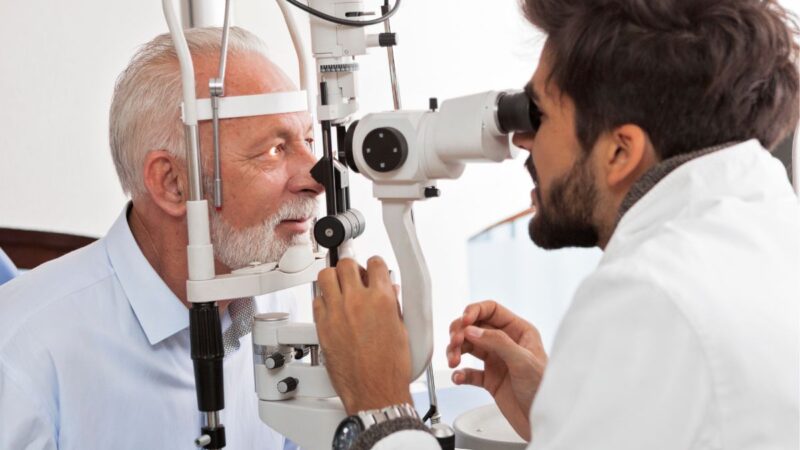Neurologist in Andalusia: Leading Specialists and Clinics Provided
Neurologist in Andalusia: Leading Specialists and Clinics Provided
Blog Article
The Pros and Disadvantages of Various Refractive Surgical Treatments for Enhanced Eyecare

LASIK Surgical Procedure
LASIK surgery is a typically carried out refractive procedure that intends to deal with vision concerns such as nearsightedness, astigmatism, and farsightedness. This medical technique has obtained popularity due to its efficiency in supplying people with clearer vision and decreasing their dependence on glasses or call lenses. Throughout the treatment, a thin flap is developed on the cornea, and a laser is utilized to improve the underlying tissue, fixing the refractive error. The flap is after that repositioned, permitting fast healing and marginal discomfort for the individual.
One of the key benefits of LASIK surgery is the rapid improvement in vision experienced by lots of patients. Most individuals notice a significant improvement in their eyesight quickly after the procedure, with marginal downtime needed for recovery. Furthermore, LASIK is known for its high success rate and low incidence of problems when executed by experienced specialists. Nevertheless, like any kind of medical procedure, LASIK also brings some risks, including completely dry eyes, glare, halos, and under or overcorrection of vision. It is crucial for people thinking about LASIK surgical treatment to go through an extensive assessment by an eye treatment specialist to determine if they are suitable candidates for the treatment.
PRK Procedure
The PRK procedure, additionally referred to as Photorefractive Keratectomy, is a kind of refractive surgical treatment that intends to fix vision problems comparable to LASIK surgical procedure. Unlike LASIK, which involves developing a flap in the cornea, PRK services the surface area layer of the cornea. Throughout the PRK treatment, the external layer of the cornea, called the epithelium, is removed to allow improving of the underlying corneal cells with an excimer laser. This reshaping helps to deal with refractive errors such as farsightedness, nearsightedness, and astigmatism.
One of the benefits of PRK over LASIK is that it gets rid of the threat of flap-related difficulties considering that no flap is produced throughout the surgical treatment. This can be useful for people with thin corneas or those associated with get in touch with sporting activities where eye trauma is an opportunity. However, the healing time for PRK is usually much longer compared to LASIK, as the outer layer of the cornea needs time to regenerate after the procedure. In spite of the longer recovery duration, PRK can be an ideal alternative for people looking for vision adjustment surgical procedure.
SMILE Surgery
An innovative refractive surgical treatment strategy obtaining appeal in the field of ophthalmology is SMILE Surgical procedure. Tiny Cut Lenticule Removal (SMILE) is a minimally invasive procedure that corrects vision by reshaping the cornea utilizing a femtosecond laser. Unlike standard LASIK surgical treatment, SMILE Surgical treatment entails creating a small incision in the cornea to draw out a lenticule, which results in less disruption to the corneal framework and potentially faster recovery times.
Among the main benefits of SMILE Surgical treatment is its ability to treat nearsightedness (nearsightedness) and astigmatism with high accuracy, leading to superb aesthetic outcomes for clients. The minimally invasive nature of the treatment also see here now decreases the danger of complications such as completely dry eye syndrome, making it a beneficial choice for individuals seeking refractive surgical procedure.

LASEK Strategy
Having discovered the benefits and considerations of SMILE Surgery, another noteworthy refractive surgical procedure method worth analyzing is the LASEK Strategy. LASEK, which stands for Laser-Assisted Subepithelial Keratectomy, is a type of laser eye surgical treatment that special info aims to fix refractive mistakes such as nearsightedness (nearsightedness), hyperopia (farsightedness), and astigmatism.
Unlike LASIK, LASEK does not entail creating a corneal flap. Rather, during a LASEK procedure, the surgeon uses a diluted alcohol service to loosen the slim external layer of the cornea, understood as the epithelium.
Among the main advantages of LASEK is that it can be appropriate for people with slim corneas who may not be excellent prospects for LASIK. Additionally, LASEK usually results in marginal post-operative discomfort and a quicker recuperation time contrasted to PRK. Nevertheless, the aesthetic recuperation procedure with LASEK might be a little longer than with LASIK.
Implantable Get In Touch With Lenses
Implantable Call Lenses use a long-term vision correction solution for individuals seeking a choice to traditional contact lenses or glasses. These lenses, additionally referred to as phakic intraocular lenses, are operatively put into the eye to fix refractive errors such as myopia (nearsightedness), hyperopia (farsightedness), and astigmatism. neurologist Andalusia. Unlike standard contact lenses that rest on the surface of the eye, implantable contact lenses work within the eye itself, supplying clear vision without the demand for daily upkeep or removal
Among the vital advantages of implantable contact lenses is their permanence. Once inserted, they click this site can remain in the eye forever, supplying consistent and secure vision correction. In addition, these lenses can be an exceptional option for people that are not excellent candidates for laser eye surgical procedure or who like a relatively easy to fix vision modification treatment.
However, implantable contact lenses do lug some threats, consisting of the capacity for cataracts or increased eye stress. It is vital for people considering this alternative to seek advice from an eye treatment expert to identify if implantable get in touch with lenses are the right selection for their certain requirements and eye health and wellness.
Conclusion
In conclusion, each type of refractive surgery has its own benefits and drawbacks. LASIK surgical procedure is prominent for its quick recuperation time, while PRK treatment may be suitable for patients with thin corneas.

On The Whole, SMILE Surgery presents a promising choice for people looking to improve their vision through refractive surgery.
Report this page